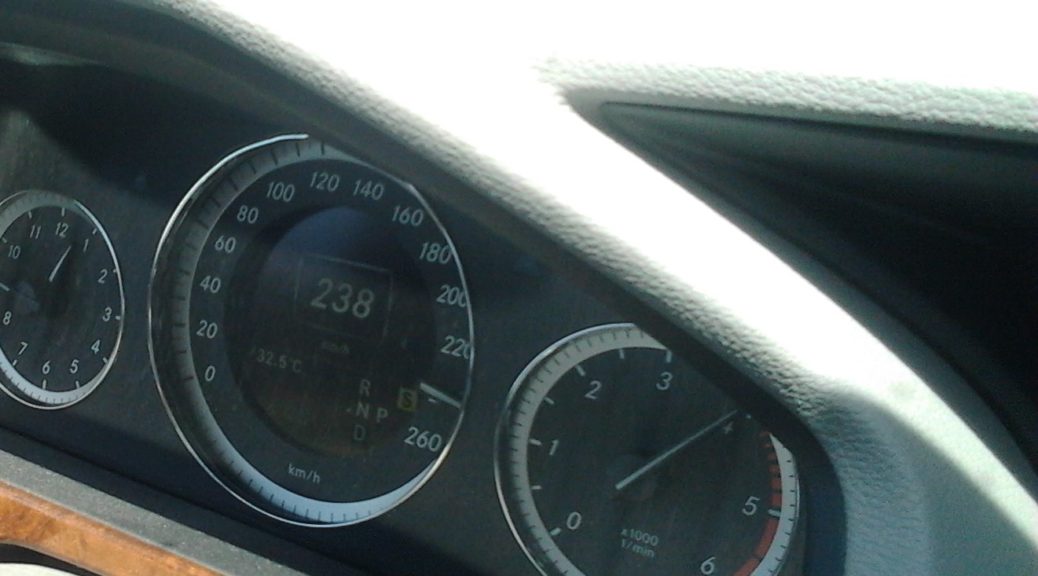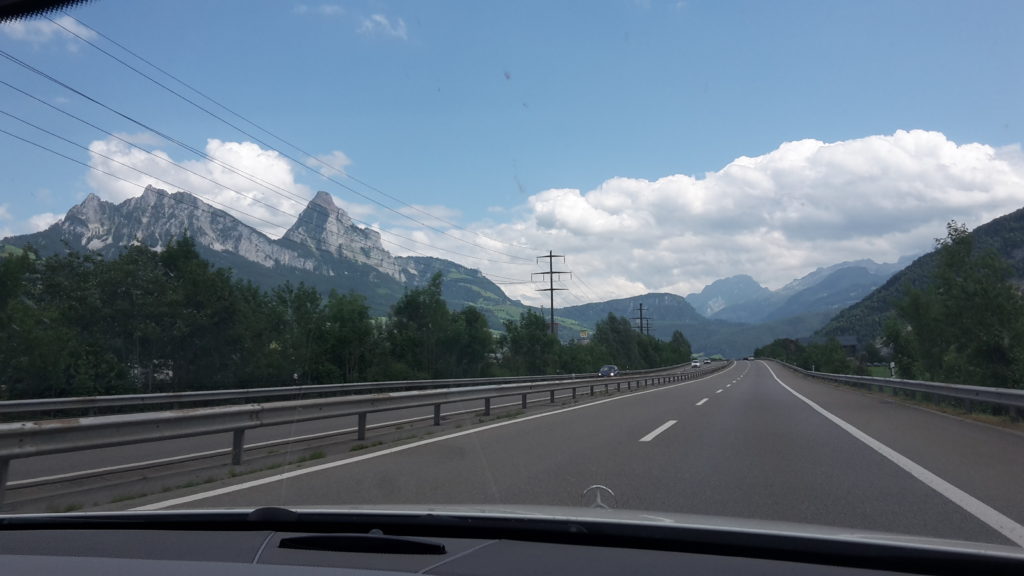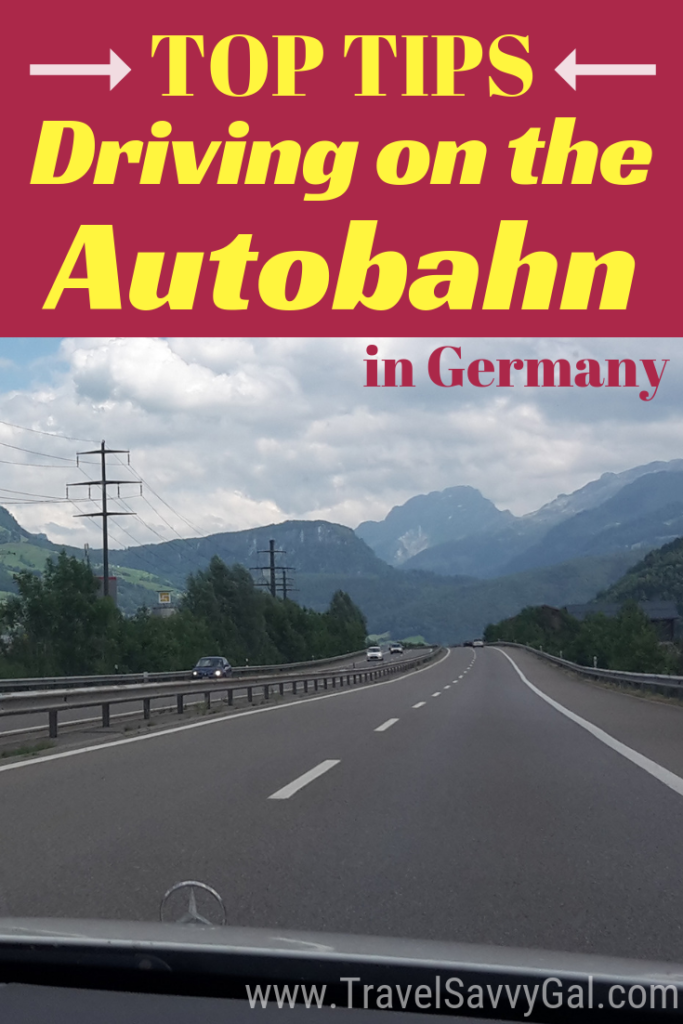
What You Need to Know About Driving on the Autobahn
As a child, I had heard the legend of driving on the Autobahn, the German highway with no speed limit. It was one of those peculiarities of countries beyond the scope of my wildest dreams, where strange things happened and the rules weren’t quite the same as at home.
Of course, my vivid imagination painted a clear picture of this large oval raceway traversing the country, with six lanes in each direction and cars zooming past at racetrack speeds. Just like car races on TV!
As I grew into adulthood, honestly, my vision of what driving on the Autobahn must be like never actually changed much. I hadn’t visited Germany, and without planning a trip there, I never looked into what life was like in all that much detail. The Germany of my childhood years was caught up in images of Berlin, on the day the Wall fell. No highway image in sight.
And moving to Milan a little over three years ago, I didn’t think all that much about what driving in Germany would be like. At least, until my first summer road trip.
My First Experience Driving in Germany
As the car approached the German border from Luxembourg, to the west, headed toward Frankfurt, I wondered, What would it be like to finally be driving on the Autobahn? There are open borders across the Schengen zone in much of Europe, so it’s not immediately clear which moment I entered Germany, but the first thing I see on the highway is . . . a speed limit sign?!?
Confused? I certainly was. The Autobahn was supposed to be the highway with no rules, where you can drive as fast as you want and basically do what you like. Sums up pretty much all your childhood dreams about adulthood, right? (It certainly was how I always pictured getting older.)
Of course, the realities of driving in Germany on the Autobahn are just a bit different from the carefree dream, much like my illusions about what it’s like to be an adult. And the Germans sure have specific ways of doing things, even on the highway without a speed limit.
So what is it really like driving on the Autobahn??
Things You Need to Know About Driving on the Autobahn
The Autobahn isn’t one special highway with no speed limit, it’s just the German word for highway. Any highway in Germany is an autobahn.

Speed is not always unlimited, only on certain stretches marked by the appropriate sign (the one above!). This was really my initial shock of first driving on the autobahn. Yes, there are some pretty long sections depending on the highway that will have no limit, but there are also plenty of spots that will have a speed limit for quite a while. Of course, your best bet is to have driving stretches far away from the city to really get the full autobahn driving experience.
A lot of highways in Germany are what I would consider pretty regular roads through the countryside, with just two lanes in each direction. The first word that came to mind when driving on a German autobahn was dinky. The ‘highway’ wasn’t particularly impressive and certainly did not seem set up for driving at unlimited speeds, especially the ones that have only two lanes in each direction and no guardrail. Don’t get me wrong, highways in Germany are well-paved and a very smooth ride even at top speeds, but there is nothing futuristic or particularly modern-looking about it.

Even when the speed limit is unlimited for extended stretches, it still slows to 120 kilometers per hour (75miles/hour) at major interchanges along the way. Yes, now that I think about it, it makes complete sense that you would need to be going at a reasonable pace if you wanted any chance of making the exit to another highway without veering off the exit ramp. But this means that even if you have several straight hours driving on an autobahn, every time you cross another major road, you’ll be slowing down considerably. So it’s more of an ebb and flow of speeding along and ‘normal’ highway driving than a continuous racetrack atmosphere.
When you’re driving 250 km/h and have to suddenly slow to 120 km/h it feels like . . . coming to a complete stop. Again, one of those things that makes sense. Of course going from 120 or 130 km/h to 0 km/hr is not so different from the deceleration from 250 to 120. But I don’t think I ever expected shifting my speed *down to* 80 miles per hour would feel like standing still. But it does. And it’s such an interesting sensation.
If you’re speeding through the left lane and a car decides to jump out and pass the car ahead, you must slow down (sometimes very rapidly!) so you don’t have an accident. At least with upcoming interchanges, you get signs and a bit of a warning that you are about to undergo a major slowdown. You can prepare mentally, and perhaps start slowing down a bit early so the shift is not as jarring. When a car doesn’t look first – or doesn’t care – that you are hurtling through the left lane, and it just wants to pass the slightly slower car or truck ahead, it will jump out suddenly. And to avoid a collision, that leaves you scrambling to slow down as quickly as possible.
And even if an accident is not your fault, you can be held liable for at least some of the cost if you are going faster than typical autobahn defaults speeds of 120-130 km/h. Believe me, I had this little tidbit drilled into my head long before I ever got behind the wheel to drive on an unlimited speed section of an autobahn. One of the (fairly logical) consequences of the privilege of driving as fast as you’d like, is that it also comes with the responsibility of being a safe driver. So for an accident that might have been able to avoided had you been going normal highway speed, you may be culpable financially for the damages.
The experience driving in Germany at top speeds is exhilarating! For me, maxing out the car’s engine when I see that unlimited speed sign involves a complete shift in driving. I sit up in my seat for maximum visibility of the road, and start to feel the adrenaline rush that comes with the anticipation and watching the speedometer climb. I lean imperceptibly forward and feel a heightened sense of awareness as I try to watch cars in the lane to my right. I spend the entire time on edge so I can see when someone jumps in front of me the exact moment it happens, to give my reflexes that extra fraction of a second to react. I feel the energy and exhilaration of whizzing by other cars, hurtling toward my destination at twice the normal speed. And I blare the radio to something with a fast beat, mirroring the car’s cadence. Honestly, it feels like a scene out of a movie, and all my sense are heightened as the car propels itself at rocket speeds along the highway.
Being on a German autobahn doesn’t make you immune to traffic. Nothing is more depressing than driving on the autobahn at top speeds, and then having to slow down or stop for traffic. Yes folks, you read that right, sometimes you are stopped on the autobahn. I’ve been caught before in autobahn traffic jam in which I was at a complete stop for nearly an hour! The joy of driving on a highway with no speed limit gets a bit trampled on when you’re too stuck in traffic to be able to drive at all. Unfortunately this is the nature of traffic jams in Europe, and something to be prepared for on the autobahn. Traffic can also be less dramatic, and just involve slow sections with a high volume of cars on the road, in which case there is no room to go fast and you’re relegated to the flow of the road.
READ MORE: Tips for Taking a Road Trip in Europe
If it gets too hot in summer, speed is likely going to be limited. I know that summer is prime vacation time to visit Europe, so if that is when you’re planning your German holiday, that is also when you’re probably planning to try out autobahn driving for the first time. Some heatwaves over the past few summers had an impact I hadn’t previously considered – that extreme heat coupled with cars going at top speeds can cause some serious damage to the roadway. Sections of the autobahn buckled and cracked, and speed limits were reduced accordingly in both 2015 and 2016. If you’re planning a trip in summer, be aware that speed limits might be imposed in sections that normally have an unlimited speed, if the temperatures climb too high.

The view of the landscape is incredible. For a lot of German autobahn driving, you’re far outside any main cities and taking in views of the lush countryside, especially in spring and summer when everything is in bloom. At top speeds, it’s passing quite fast, but the nice part about the sections with a speed limit is that you actually get to see and appreciate Germany’s beauty. A lot more scenic than many other drives I’ve done.
And in the end, going so fast has a real impact on your petrol usage and gas mileage (kilometrage?), so most drivers don’t try to push their cars’ absolute limits when it comes to speed. Yes, if you are driving fast on the open road of a German autobahn, you probably won’t be the only one zooming along, but from what I’ve seen, most Germans seem to stick to a speed of around 150-160 km/h (90-100 mph) on the highway’s unlimited stretches. Faster than you’re typically allowed to go, but definitely a practical not-super-fast speed where you retain a lot of control and don’t have to make huge speed adjustments every time an interchange approaches.
In the end, I found that autobahn driving wasn’t all that different from any other highway driving I’ve done anywhere in the world.
With just a few differences of course when the speed becomes unlimited, especially if you choose on the open stretches to go as fast as your car will take you. And certainly, if driving at breakneck speeds puts abject panic in your heart, you could drive on the autobahn only a bit faster than the way you drive on highways at home. And not be too out of place.
What’s the fastest you’ve ever gone in a car? Have you driven on the German Autobahn before? Any other things that surprised you about driving in Germany? Or tips you’d give to someone driving on the Autobahn for the first time? Share away in the Comments below.
Want to access this post again later? ‘Pin it’ on Pinterest!
